We at CreoleGen are once again very proud to feature a post by Mr. James Guidry, an avid reader and guest author. Our readers may recall that in the recent past, Mr. Guidry published his reflections on his home parish of Holy Ghost Church in Opelousas. The following article covers his thoughtful and heartfelt feelings on “country life” in St. Landry as it relates to family, race, community, and celebration.
The city students said I was from the country when I attended college in New Orleans. I was shocked by this in the beginning since I had never ever considered Opelousas to be country. Sunset, Bunkie, Port Barre, Grand Coteau and Plaisance were definitely country, but not Opelousas. After all, the large department store, Abdalla’s, had a mechanical Santa Claus in a display window every Christmas. Folks would come from all over St. Landry Parish to see the Santa spin his head 90 degrees from dead center, in both directions!
Upon deeper reflection, however, I had to admit that my hometown was as country as the smaller surrounding towns. For one thing, there is a significant equestrian culture in St Landry Parish. It was not uncommon to see a shirtless and shoeless teenager riding a horse bare back through the dirt streets of my neighborhood. I heard stories about Sunday afternoon match races between horses representing various farms with heavy cash laid down. My farm residing classmates talked about weekend trail rides with their family and friends. The trail ride tradition continues.
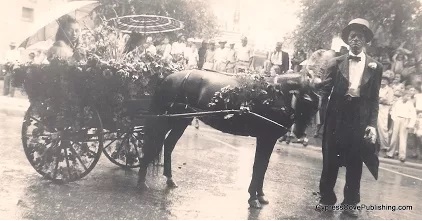
On a recent Opelousas trip I had to pause as policemen directed traffic to let a trail ride proceed in safety. If anything, the tradition has grown. They are now scheduled events in Louisiana and Texas with hundreds of people attending. These trail rides include a zydeco DJ in a tractor pulled wagon. They usually end in a clearing with a pavilion built for dancing and partying. Our parents wore western wear to hear and dance to “la la” music in a friend’s living room or in a dance hall like the legendary Slim’s Y-Ki-Ki. Some of the men wore belt buckles as large as a “cochon de lait”. This was reflected in the clothing style of zydeco musicians like Boozoo Chavis and currently by Geno Delafose.
Geno Delafose
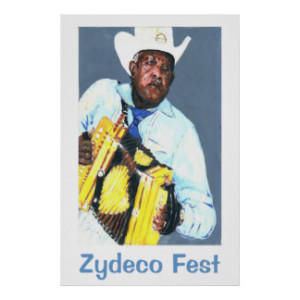
Boozoo Chavis
For another thing, the economy of St. Landry Parish was and is heavily dependent upon agriculture. The important crops include cotton, sugar cane, soybeans, corn and sweet potatoes. In fact , St. Landry Parish is the self proclaimed sweet potato capitol of the US. The Louisiana sweet potato is marketed as a yam. Sweet potatoes and yams are similar but not related. The Louisiana yam is actually a sweet potato variety and has led to the confusion between yams and sweet potatoes in the US. A sweet potato processor and shipper, Felix Dezauche, built a canning plant in Opelousas in the 1950’s. The plant was along my route to school. On cold days I would warm my hands with the hot air, produced by the plant, coming through the grates in the sidewalk. Felix Dezauche was also a major force in the creation of the annual Opelousas Yambilee festival. The festival began in 1946 and occurred during the second week of October.
Sweet Potato Processing Plant
My memories of the old days are not completely romantic and idyllic. There was always the current of racism and segregation running through all of these experiences. The country mouse and the city mouse both lived in constant danger. Our musicians entertained in venues that they would be killed for patronizing. We provided the back breaking labor for harvesting the crops of St Landry Parish.
The rules of segregation were filled with irony. My father worked as a yard man in the afternoons after his 7 to 4 job ended. I would help him sometimes. It would unnerve me to see this most dignified of men saying yes sir and yes ma’am to white people many years younger and possessing none of his dignity and grace. He was related to many of them sharing at minimum a great grandfather and perhaps at maximum, the same father. This was common knowledge in the black community.
My father’s nickname was “White Folks”. On rainy days some of his yard clients would drive him home. If the driver was a woman he might be the lone passenger in the car and definitely sitting in the back seat. The driver could have been a cousin or even a half sister. But the thing, is I can not condemn all of them out of hand. They respected my father and did him many favors. The greatest favor was that one of them paid tuition for my seven siblings and me to attend parochial school. This continued for many years, through grade and high school. Every month I would present a check signed by this white woman to the school office.
I was more of an observer than a participant in the so called “country” culture of the parish. We did not own horses and my mother kept us on a short leash that she had no problem yanking when in her judgement it was necessary to do so. A slight build and delicate health did not allow me to do summer farm labor like many of my friends to earn money for school expenses. I did help to harvest kind of a unique crop.
The long driveway of a wealthy Opelousas family was lined with pecan trees. My brothers and I would help my father harvest the pecans during the month of October. We would split the pecan sales 50-50 with this family. My adventuresome Uncle Frank would climb the trees with a long cane pole to facilitate harvesting. He would climb out to precarious positions on various branches and “thrash” the tree with the pole. Thrashing was a technique borrowed from Native Americans. Pecans would rain down on the tarps that we placed underneath. We picked the pecans and put them in gunny sacks. Our share would easily result in several hundred dollars, a lot of money in those days.
Pecan harvesting had another benefit for me. It got me out of marching in the annual Yambilee parade. There were two parades . The colored parade was in the morning and the white parade in the afternoon. Each parade honored a citizen as Mr. Yam. The white Mr. Yam and the black Mr. Yam would ride in convertibles with big sweet potato heads waving to the crowd and scaring little kids. The colored Mr Yam looked covered with brown sugar and appeared tastier than his white counterpart. I inherited the sense of dignity from my father that would not allow me to march behind a human yam, no matter how flavorful. It was a school holiday, save for the parade. I would tell the principal, Sister Virginia, that I had to help my dad with the pecans on that particular day. I still cannot eat either pecans or sweet potatoes.
James Guidry
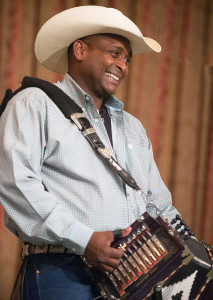
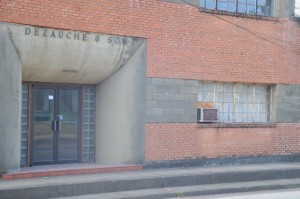
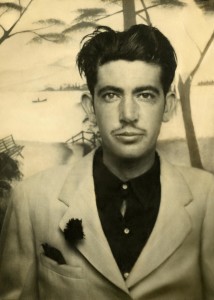
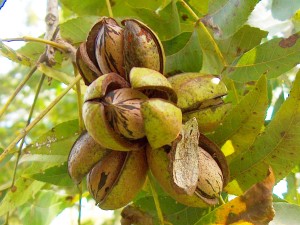



How eloquently stated!
My memories of childhood and growing up in Opelousas are similar!
Those were the best education times at Holy Ghost.
It was truly an institution of quality education, run by quality religious for quality students!
Thank – you James Guidry.
I love reading Mr Guidry’s reflections. I spent much time in the “country”. My “country” was Davant, LA, south of New Orleans, in Plaquemines parish. I still can eat pecans.
Thanks for sharing these memories James. They bring back memories I have as a city boy from New Orleans who spent many summers on my grandfather’s farm (sugar cane) in New Iberia. I also remember you from our days at Xavier University.
James–That was great! It’s time for us to tap those memories. I love your humor. I remember going to a “la-la” in Frilot Cove with Rosemary Frilot, a dear friend.
Brings back many memories James Guidry…I graduated from Holy Ghost High in 1963..I believe a year before you…some of my classmates were Patrick Fontenot, Joseph Eaglin, Etha Semien, Gene Gobert and Louis Guidry who may have been one of your relatives..I left shortly after graduation for the Military where I spent 27 years until retirement…currently live in Georgia after another retirement from Civil Service…
I love reading anything James Guidry writes.
Wow! Papi, I liked reading this about my great grandpa. Respect.
Well done Mr. Guidry. Brought back old memories, especially the name: Sister Virginia
Very interesting and entertaining! I enjoyed reading that. As for myself, I did march in the colored paraded since I was in the band at Holy Ghost. Dressed in my sharp green and white uniform and cap, with my white shoes on that I had polished the night before with liquid white shoe polish, I pretended that I was playing the music for third clarinet. It was attached to the top of my clarinet, but it was just too difficult for me to read as it bounced around while I was marching in the Yambilee Parade. We marched north on Union Street turned left onto Church Street, and then right onto Market Street, eventually ending up at the North City Park, where there was a fair for colored people with games and rides. I remember hearing a cannon booming out in the morning while sitting in one of the classrooms in the old wooden elementary school building at Holy Ghost, imagining the Yambilee celebration on the south side of town, a celebration that we could only imagine since we were not allowed to be a part of it.
I can still remember a big bag of unshelled pecans being sent in the mail from grandma and grandpa Guidry. I Love Pecans.
Thank you Mr. Guidry for posting this article.I thoroughly enjoyed reading it. I’m from New Orleans and went to Holy Ghost Catholic elementary school there. I must say yams/sweet potatoes are my favorite foods, however, I still don’t know the difference between the two….lol…. I eat them several times a week.
Patricia Braud Bishop
Great read dad. I think you would make a great Mr. Yam as you already have a natural sweet potato head.
Thank you for sharing your story. It brought me to tears. I could see you as a child and all your childhood goings-on. Very moving and very Louisiana. Should be a book. You touched on many things in these few paragraphs, culture, music, race, daily life, economics, the kindness of others in deeply divided times. I can’t say enough. Thanks again! Keep on writing! Lovely!
Mr. James Guidry, Thank you for your writings of your childhood here in St Landry Parish (Opelousas). How many books have you written?
All of your writings are so eloquently written that I feel compelled to follow everything you write.
James:
Your recollections were a great read, and gave insight into your personal experiences. I remember you and your brothers, but was unaware of your struggles. Thank you for sharing this informative history.
I always thought Mr. Sweet Potato Head was a man of more substance than the Hasbro toy character, Mr. Potato Head. I am not sure if the births of the two are related in any way, or which one precedes the other. I do know they both originated in the early post WW2 era.
Of course in the segregated South of the times two versions of Mr. Sweet Potato Head were required. Both the Black Mr. Sweet Potato Head and the White Mr. Sweet Potato Head for the Yambilee festival came from the ranks of the most prominent citizens of their respective communities. The funds allocated for the early morning Black portion of the festival and the afternoon prime time white portion of the festival, played perfectly against the backdrop of the Brown Vs Board of Education briefs. These funds were distributed for two parades – one white, one black, separate and unequal.
At any rate, the sweet potato harvest was a significant part of the regional economy, and a year in which the yield was poor pained both communities , because The Black population provided much of the labor required to harvest the crops.
The festival occurred in October, a prelude to Thanksgiving and the big Holiday season.
I could provide more analysis of the social climate of the time and place but I will refrain.
And my brother is correct. All those wild “yam-i-nals” roaming the streets were kind of scary.
I do like the taste of sweet potatoes, and so did my parents. Some health professionals even say they provide significant healthful and nutritious benefits.
The funds allocated for the early morning Black portion of the festival, as opposed to the afternoon prime time portion of the festival, would perfectly parallel with the briefs filed in the Brown vs Board of Education case – one white-one black
Just for the record – only a hardcore nut case would pronounce the hard shell nut as PEE-can or similar
A correct pronunciation is to stress the second syllable.
Either pih-KHAN or puh-KHAN is acceptable
PEE-can is personal equipment for truckers
The pee-can is the can under the bed, for use during the night.
LOL
Hi James. I truly enjoyed reading your article. It really brought back memories . As we lived 5 miles out of town we hardly got to go into town. My father was Nelson Brothers , a self taught mechanic and welder. He was quiet a unique person. Never had much to say but he was a doer of major things to be done around.
I so enjoy your reflections. I remember going to Opelousas as a child and playing on Eliza Street at my grandparents. It was a dirt street. ‘Old Pop’ had a mule and ‘Old Mom’ would wring the chicken necks and pluck the feathers. I was baptized at Holy Ghost in ’48.